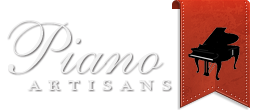Buying a New Piano vs. Buying a Restored, Classic Piano: Unveiling the Differences in Production, Investment, and Overall Satisfaction
Introduction:
The decision to purchase a piano, whether new or used, is a significant investment for any musician or enthusiast. However, the choice between a new piano and a restored, classic piano raises important considerations regarding craftsmanship, historical value, and long-term satisfaction. This article aims to explore the factors surrounding this decision and shed light on the unique qualities that vintage, hand-built pianos can offer.
New vs. Slightly Used Pianos: Aesthetic Appeal and Performance
New pianos, regardless of their origin or manufacturer, generally fulfill the fundamental requirements of a musical instrument. They boast the classic piano shape, employ similar components to the original design, and produce a recognizable piano sound. If you are seeking a brand-new instrument with a contemporary appearance, such as high-gloss black or white finishes, or advanced composite action components, then a new or slightly used piano may be the right choice for you.
The Historical Advantage of Classic Pianos:
Antique pianos have proven their enduring value throughout history. Just as discerning musicians and collectors seek out vintage Stradivarius violins or classic guitars, early 20th-century American pianos offer a similar appeal. These instruments are true works of art, meticulously crafted by highly skilled artisans who hand-picked aged hardwoods and dedicated themselves to unsurpassed quality.
The craftsmanship and materials used in vintage pianos often surpass their modern counterparts. While some of the manufacturers of these exceptional instruments are no longer in business due to the high cost of maintaining a piano factory, their legacy lives on in the remarkable quality of their creations.
Investment and Value:
Used pianos, including classic American pianos from the early 20th century, often come with a more affordable price tag compared to their new counterparts. The nature of pianos as acoustic instruments means that they have not undergone significant changes since their inception. However, new piano prices continue to rise, making it challenging for many individuals to afford the caliber of instrument they desire. Consequently, there is a thriving market for pre-owned pianos that offer comparable or even superior quality to new models at a more accessible price point.
Moreover, high-quality used pianos tend to hold their value remarkably well, and in some cases, even appreciate over time. Unlike used cars, which experience significant depreciation, well-maintained pianos retain their worth. For example, a prestigious grand piano purchased in 1974 for $3500 could now be worth two to four times that amount, depending on its condition. From an investment perspective, buying a used piano allows individuals to avoid the initial depreciation phase associated with new instruments.
The Appeal of Vintage American Craftsmanship:
When considering new Asian-made pianos, such as those from Kawai or Yamaha, it is essential to weigh the pros and cons. While used Kawai pianos often come with reliable parts support, Yamaha does not offer the same level of support for their used instruments. Additionally, some Asian pianos bear prestigious American names on their fronts, such as Knabe, Chickering, or Weber, even though they are low-end Korean or Chinese products masquerading as American-made pianos.
In summary, why would you choose a new or used mass-produced Korean, Chinese, or Japanese piano when, for the same price or even less, you can own a meticulously restored, hand-built vintage American grand piano? Our commitment is to curate a selection of only high-quality instruments, filtering out the pianos that were never truly exceptional musical instruments.
Conclusion:
The decision to purchase a new piano or a restored, classic piano involves various factors such as aesthetic preferences, historical significance, investment potential, and overall satisfaction. While new pianos
